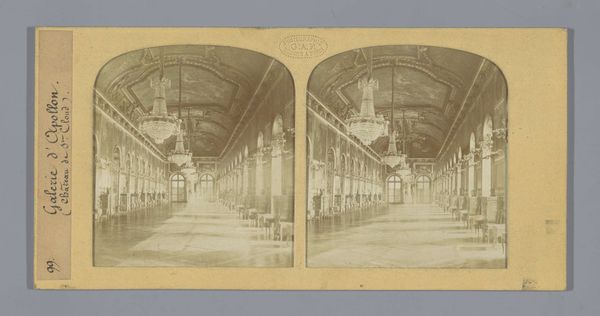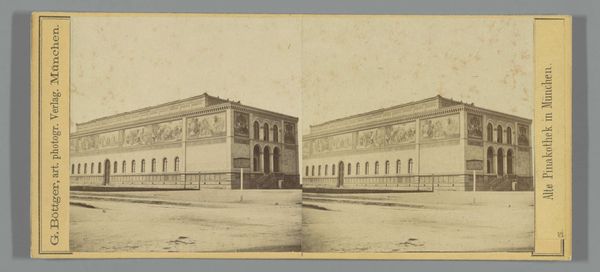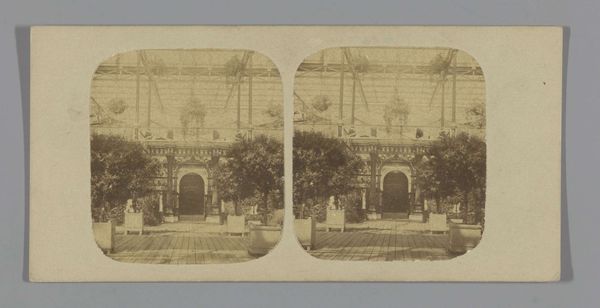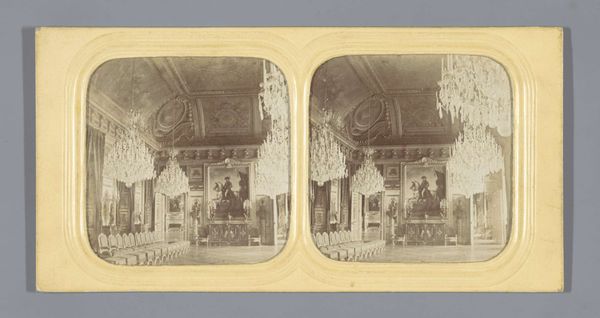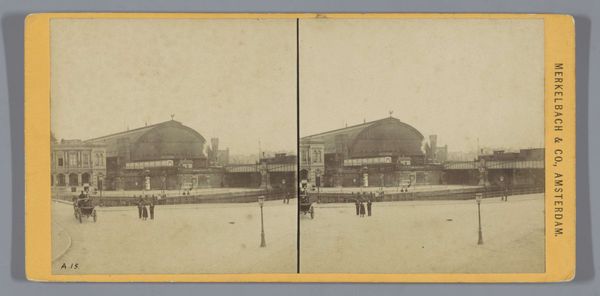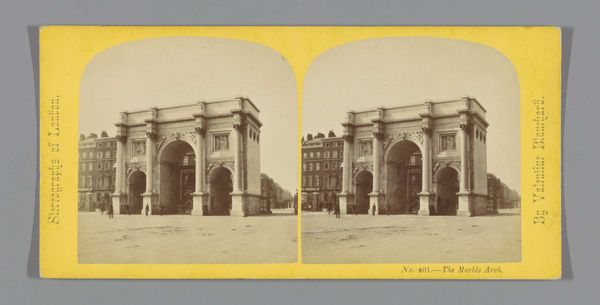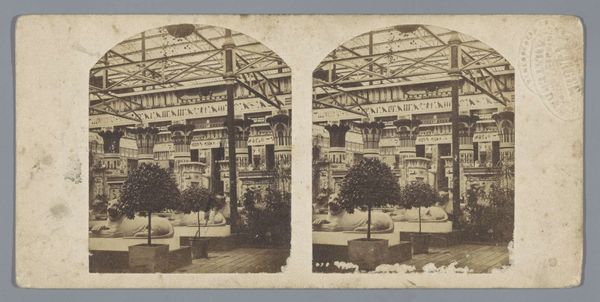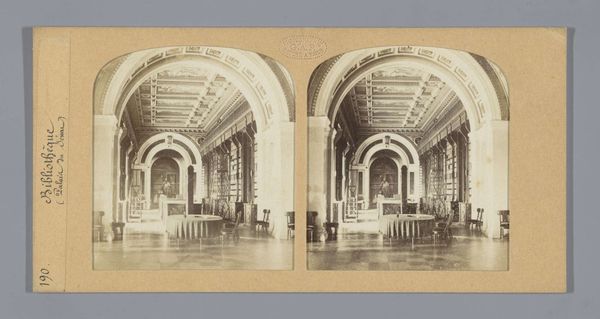
Dimensions: height 85 mm, width 170 mm
Copyright: Rijks Museum: Open Domain
Editor: Here we have a gelatin-silver print titled "Kochbrunnen te Wiesbaden," created by Theodor Creifelds, sometime between 1860 and 1880. It has a quiet, almost staged feeling to it, like a theater set. What’s your read on this particular image? Curator: The composition speaks volumes about the role of public spaces in 19th-century society. Images like these were instrumental in shaping the public's perception of cities and their amenities, wouldn’t you agree? Editor: Absolutely! It seems almost propagandistic. Like a beautiful postcard. Curator: Exactly. Photographs such as this offered a way to promote urban development and project an image of modernity. The architectural detail, meticulously captured, highlights the engineering and civic pride associated with Wiesbaden at the time. How do you think this relates to the development of tourism during this era? Editor: Well, it gives the impression of a really beautiful, developed city... almost like, "come visit our lovely new spas!" Curator: Precisely. The spa, the meticulously constructed fountain – these were potent symbols of leisure, health, and social status. Creifelds, like many photographers of the time, actively contributed to constructing this attractive narrative around urban spaces. It's a very deliberate choice, right down to the figures placed to imply activity and community. Editor: So it's not just a picture, but a deliberate representation of societal values and urban planning. It does make you wonder what it left out of frame. Curator: Indeed! Understanding its historical context challenges us to analyze its intended audience and the power dynamics shaping its creation. Editor: It's more than just a pretty picture. It's a carefully constructed message about society at that time. Thanks, that perspective really helps me to see the photograph differently.
Comments
No comments
Be the first to comment and join the conversation on the ultimate creative platform.
